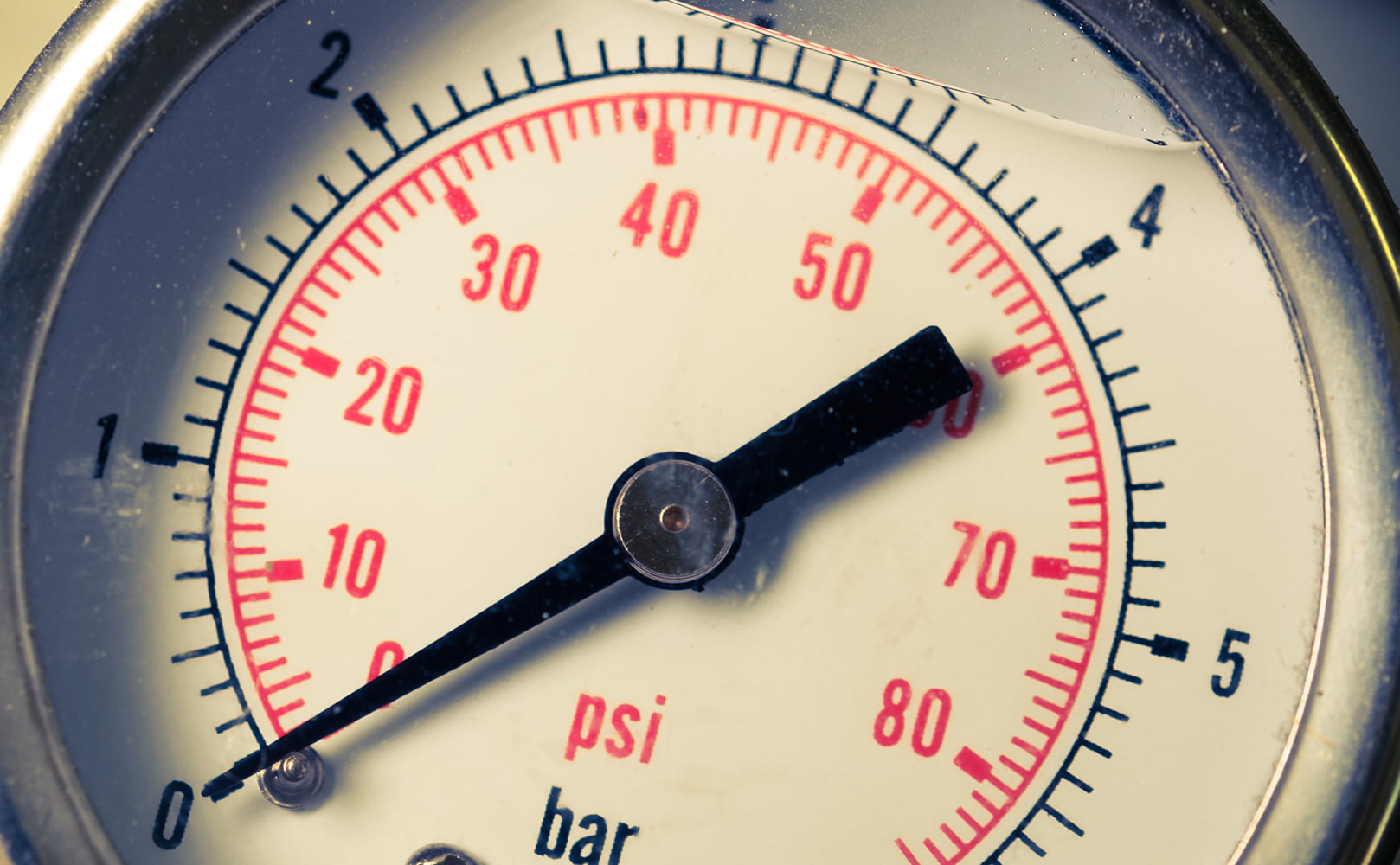RO Tank Pressure When Empty – How Much Should It Read?
Written by: Alexandra Uta // Last Updated: Mar 8, 2023
This page may contain affiliate links. If you buy a product or service through such a link we earn a commission at no extra cost to you. Learn more.
Reverse osmosis storage tanks are pretty amazing things.
They are able to send water out of your RO faucet, on demand, without using any kind of electronic pump or motor! Providing your RO tank pressure is sitting where it should be, of course.
So where should that be? Let’s find out.
Key Takeaways
- The ideal pressure for an empty RO storage tank is between 6-8 psi, but this will also depend on the make and model, so it is always best to check labels, user manuals, or contact the manufacturer directly.
What’s the Ideal RO Tank Pressure When Empty?
So, what’s the ideal RO tank pressure when empty?
Generally, the pressure of an RO tank when it’s empty should sit between 6 and 8 psi. Of course, this may vary with your specific model, so it is always best to check the tank label or what your manufacturer recommends.
How to Measure Air Pressure in an Empty Reverse Osmosis Water Storage Tank
Checking that the air pressure in your RO tank is within range is a task you can do yourself at home in a few steps.
Tools You’ll Need
You will need a pressure gauge and a bicycle pump or compressor.
1. Shut off Water Supply
First, shut off the feed water supply to your reverse osmosis system, and close the storage tank valve. Open the RO faucet to drain the system.
2. Remove the Storage Tank
Remove the storage tank from the rest of the system, and take it outside or somewhere that you are able to drain its contents.
3. Empty the Tank
Open the tank valve and allow as much of the water as possible to flow out. Once it has reduced down to a trickle, move to the next step.
4. Pump the Remaining Water Out
To get the last of the water out of the RO tank, use the compressor or bicycle pump to push it out. Go slow!
5. Measure the Pressure of the Empty Tank
Use the pressure gauge to measure the tank’s pressure once it is empty, and see that it is sitting between 6 and 8 psi or the value suggested by your manufacturer.
6. Reconnect the Tank
Once your tank is at the desired pressure (if it isn’t, follow the steps down below), then reconnect it to the RO system and turn the water supply back on. Open the storage tank valve and let it refill.
How to Adjust Pressure in an RO Storage Tank
If you have measured your RO tank pressure and find it sits outside of its ideal values, you will need to depressurize or repressurize it.
If the psi is too high, release a little bit of air at a time from the Schrader valve until it drops into the ideal range. If it is too low, add some air with the compressor or bicycle pump until it reaches its ideal pressure.
Why Is My RO Tank Losing Pressure?
Age and use are the two main reasons that RO tanks lose air pressure. Over time, it just seeps out and causes a decrease in the flow rate of your RO water.
To test that this is the case, you can check the weight of your tank. If it is full but heavier than usual, that may be due to less air in it and more water. Or, if you disconnect your tank and see that RO filtration is still happening, it usually means the tank is getting water, but the water just isn’t being pushed from your faucet at the pressure it should be. Both things indicate you need to repressurize the tank.
Why Adding too Much Pressure Is a Bad Idea
Adding more pressure to a reverse osmosis tank than the ideal psi means that you will reduce the amount of water the tank is able to hold, and it will trigger an earlier ASO valve shut-off. It would also cause more water to be wasted during the purification process.
What Is a Reverse Osmosis Pressure Tank and How Does It Work?
An RO tank stores RO-filtered water, allowing the user to access it whenever they need it. The tank consists of a compartment to store the water and a compartment to store the pressurized air, both separated by a butyl bladder. The pressurized air pushes the stored water up and through the RO faucet when it is opened, which means the system does not need any kind of electronic pump to run.
The air/water tank is also known as a hydropneumatic tank. When the filtered water in the tank reaches a certain level, and the pressure has built to a certain point, it will trigger the automatic shut-off valve to stop your system from producing any more water. When the water level goes down again, and the pressure drops, the filtration system will turn back on.
If you have any questions about RO tank pressure when empty please don’t hesitate to leave a comment below!
Information provided on BOS is for educational purposes only. The products and services we review may not be right for your individual circumstances.
We adhere to strict editorial guidelines. Rest assured, the opinions expressed have not been provided, reviewed, or otherwise endorsed by our partners – they are unbiased, independent, and the author’s alone. Our licensed experts fact-check all content for accuracy. It is accurate as of the date posted and to the best of our knowledge.


